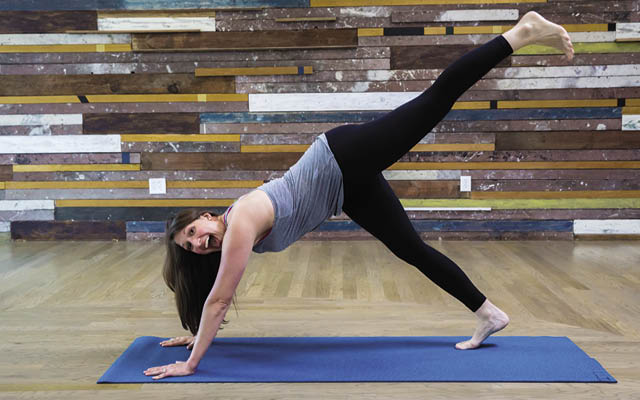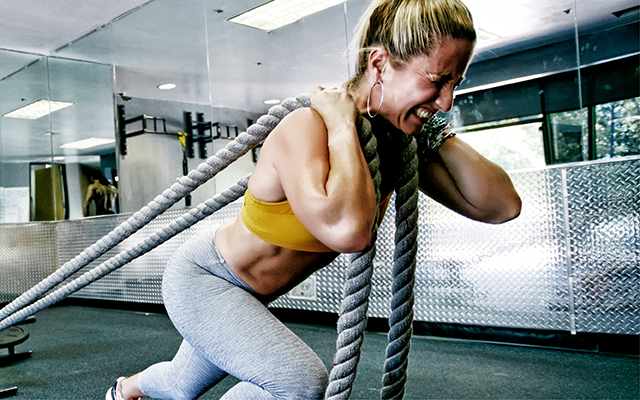When I ran, I could be either present or somewhere else. I was acutely aware of my surroundings: the sounds, the smells, my breathing, my feet as they hit the ground. But it was also a way to quiet my busy mind; it was almost meditative. Running was my whole world, but I didn’t realize that until it was gone.
I started running in high school to cope with my mother’s alcoholism. At that time, running was like freedom for me: It allowed me to move away from a lifestyle I wanted to avoid and toward the life I wanted to create. It surrounded me with like-minded people and eventually led me to my career as a physical therapist. To this day, my professional life is immersed in the sport: I teach a course on endurance athletes and overuse injuries at Emory University, I write for racing publications, and I speak about running.
But in November 2015, when I was 34 years old, I was diagnosed with arrhythmogenic right ventricular cardiomyopathy (ARVC) — a rare genetic condition that can cause cardiac arrest. Like anyone who carries the gene for ARVC, I have an 80 percent chance of activating the gene when I exercise intensely, which can cause arrhythmia and heart strain.
I realized I was lucky to receive my diagnosis; other athletes often die before they know they have a problem. But with 13 marathons under my belt and an unfulfilled dream to complete an Ironman, I felt as if I’d received a death sentence.
Slowing Down
Before my diagnosis, I’d passed out during marathons in 2006, 2007, and 2010. I simply shook it off; I chalked it up to dehydration or assumed I had pushed myself too hard.
But then I began to experience ventricular tachycardia (VT), which was more concerning. During VT, heart rate spikes and its rhythm becomes erratic. The heart pumps too fast for the body to receive blood and oxygen.
In April 2015, a year after giving birth to my son, Andy, I had a third episode of VT during a morning run. While my doctors struggled to pin down a diagnosis, they ordered me to keep my heart rate below 130 beats per minute. I couldn’t chase after Andy or carry him upstairs, much less go on the daily runs that were a cornerstone of my life.
This period of uncertainty was difficult, but through it all my husband, Brian, was my biggest supporter. We had to find a new normal — instead of running together, we were dealing with my fatigue and learning the ropes of parenting. Because we were proactive about facing those challenges and made an effort to seek couples’ counseling, our marriage flourished.
Still, it was a challenging time for me. I was already going through so many changes as a new mother. I’d also recently opened my own physical-therapy practice, in part so I could work fewer hours and reduce my work-related stress.
Scared and angry, I was trying to keep it together. I felt I had done everything possible to be strong and healthy. It wasn’t fair.
Reckoning and Reinventing
Genetic testing confirmed my ARVC diagnosis in late 2015. A month later, surgeons implanted a cardiac defibrillator, which would restore a normal heart rhythm in the event of another VT episode.
Despite the efforts I’d made to follow my doctor’s orders and slow down, I failed another stress test in early 2016. On the same day, Andy tested positive for the ARVC gene.
That’s when the gravity of our situation sank in, and I felt truly powerless. I wondered if I’d even get to see my son grow up.
It was clear that I needed to double down on my stress-reduction efforts. So I decided to approach changing my lifestyle with the same focus and determination I would have used in training for a race.
I hired a life coach, Shawn, who encouraged me to start meditating and doing yoga. At first, I hated meditation — sitting still was against every instinct in my body. All I wanted to do was move. But I trusted Shawn’s advice and believed it would get easier. In time, it did.
Like running, meditation stops my mental chatter and gives me perspective. Whereas running was like an escape, when I meditate I’m not shutting anything out or trying to make anything happen. It gives me a sense of clarity and peace, and I can carry that calm forward into the rest of my life. Though it was difficult at first, now I crave meditation, and I do it several times a day.
I had the same resistance to yoga. In the beginning, it didn’t feel like a real workout after years of pushing myself in races. But after a few classes, it started to click. Yoga is like running in that it’s about both body and mind, and it gives me the satisfaction of knowing I’ve done something good for myself.
While it’s been a struggle to get used to living without cardio, yoga and strength training, on the other hand, have made me stronger and more flexible. After two years of yoga, I could finally touch my toes. And I have a butt now — an actual strong butt from doing squats.
What’s even better is knowing that building muscle helps my heart pump more efficiently.
Choosing a New Reality
I still interact with runners daily in my physical-therapy practice. Sometimes it’s tough — I still miss it — but I cherish being part of that world and I pride myself on being able to help bring runners back from their injuries.
I’m at peace with where I am now, but I don’t believe this is where I’ll always be. I’ve been through so much change in the past five years, and I know I’ll grow through the next five, too. I hold on to the hope that someone will find a way to stop the progression of ARVC, or even cure it — for my son’s sake.
I know my reality is what I make it. I can’t do this thing I loved, but I won’t be miserable because of it. I still have important contributions to make, both in my family and in my professional life, and that keeps me motivated.
My course on endurance athletes is becoming certified for clinicians, and I just finished writing another book about running for pregnant and postpartum moms (my first book, Racing Heart, is about my diagnosis). I’m also speaking more about self-care and how to cope with losing one’s athletic identity.
In a yoga class about a year ago, I learned a particularly valuable lesson. We were all practicing a posture that had multiple levels of difficulty. Because I wanted to do the best I could, I’d pushed myself a bit too far, and I was struggling.
Then the instructor said something I still think about today: “I invite you to reevaluate your foundation. If you ease up, you may find that it is easier to breathe.” That day in class, I was able to pull back, and the pose became more comfortable.
I also realized that I’d been doing something similar in my life for a long time: pushing myself too far, struggling to be better and faster, not listening to my body. I’m grateful to have been given the chance to pull back. Now I’m honoring what my body needs, and it’s easier for me to breathe.
Kate’s Top 3 Success Strategies
1) Listen to your body. “Athletes hear this a lot, but it’s a hard skill to master,” Kate says, especially when your mind is saying something else. Cultivating a meditation practice helped Kate learn to tune in to her body’s signals.
2) Have more than one tool in your toolbox. “Our passion is often all-consuming,” she notes, “so that if we lose it, we’re lost.” Diversifying her interests — specifically by joining a new yoga studio — gave Kate a new sense of purpose.
3) Learn your lesson. Being open to growth made all the difference for Kate in finding joy in her life. “As cliché as it sounds, something good can come from something bad,” she says.
This originally appeared as “Racing Heart” in the October 2019 print issue of Experience Life.




This Post Has 0 Comments